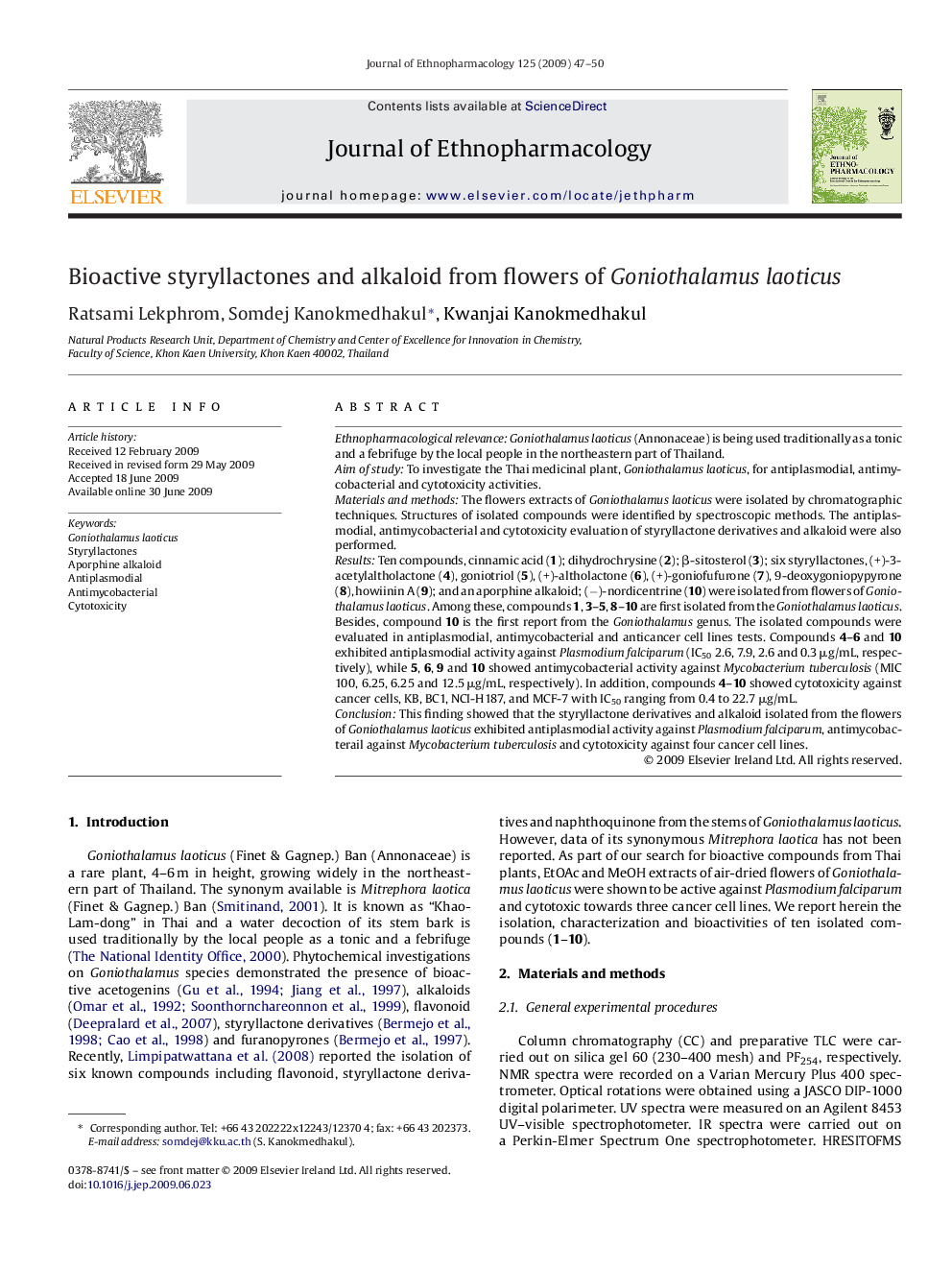| Article ID | Journal | Published Year | Pages | File Type |
|---|---|---|---|---|
| 2546974 | Journal of Ethnopharmacology | 2009 | 4 Pages |
Ethnopharmacological relevanceGoniothalamus laoticus (Annonaceae) is being used traditionally as a tonic and a febrifuge by the local people in the northeastern part of Thailand.Aim of studyTo investigate the Thai medicinal plant, Goniothalamus laoticus, for antiplasmodial, antimycobacterial and cytotoxicity activities.Materials and methodsThe flowers extracts of Goniothalamus laoticus were isolated by chromatographic techniques. Structures of isolated compounds were identified by spectroscopic methods. The antiplasmodial, antimycobacterial and cytotoxicity evaluation of styryllactone derivatives and alkaloid were also performed.ResultsTen compounds, cinnamic acid (1); dihydrochrysine (2); β-sitosterol (3); six styryllactones, (+)-3-acetylaltholactone (4), goniotriol (5), (+)-altholactone (6), (+)-goniofufurone (7), 9-deoxygoniopypyrone (8), howiinin A (9); and an aporphine alkaloid; (−)-nordicentrine (10) were isolated from flowers of Goniothalamus laoticus. Among these, compounds 1, 3–5, 8–10 are first isolated from the Goniothalamus laoticus. Besides, compound 10 is the first report from the Goniothalamus genus. The isolated compounds were evaluated in antiplasmodial, antimycobacterial and anticancer cell lines tests. Compounds 4–6 and 10 exhibited antiplasmodial activity against Plasmodium falciparum (IC50 2.6, 7.9, 2.6 and 0.3 μg/mL, respectively), while 5, 6, 9 and 10 showed antimycobacterial activity against Mycobacterium tuberculosis (MIC 100, 6.25, 6.25 and 12.5 μg/mL, respectively). In addition, compounds 4–10 showed cytotoxicity against cancer cells, KB, BC1, NCI-H187, and MCF-7 with IC50 ranging from 0.4 to 22.7 μg/mL.ConclusionThis finding showed that the styryllactone derivatives and alkaloid isolated from the flowers of Goniothalamus laoticus exhibited antiplasmodial activity against Plasmodium falciparum, antimycobacterail against Mycobacterium tuberculosis and cytotoxicity against four cancer cell lines.
